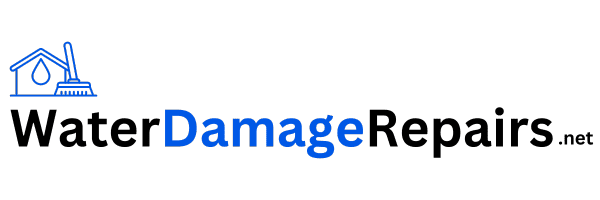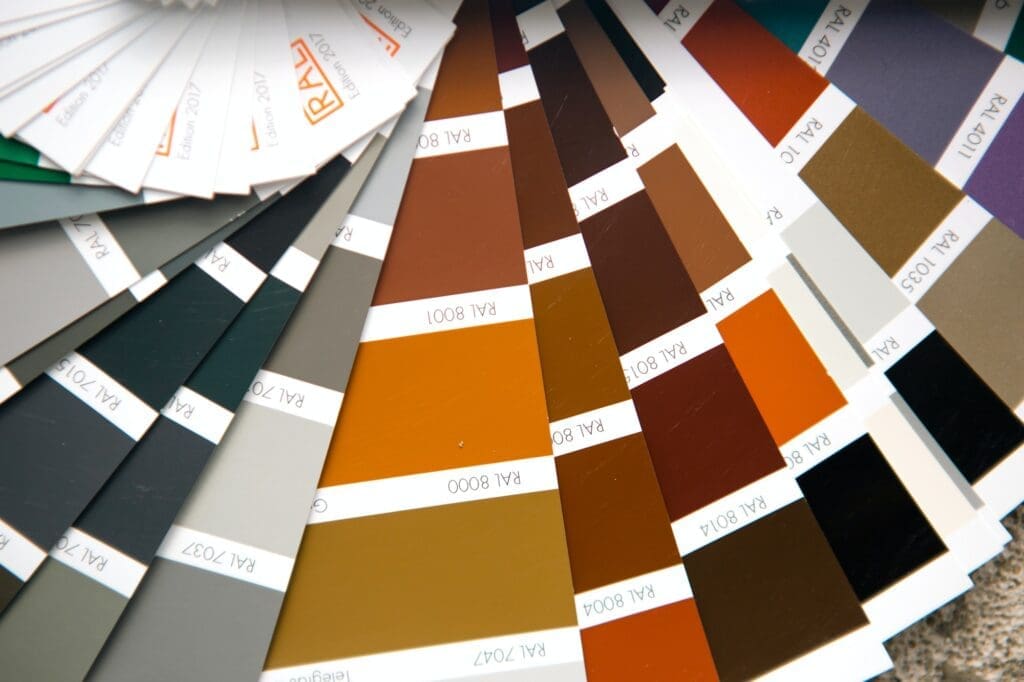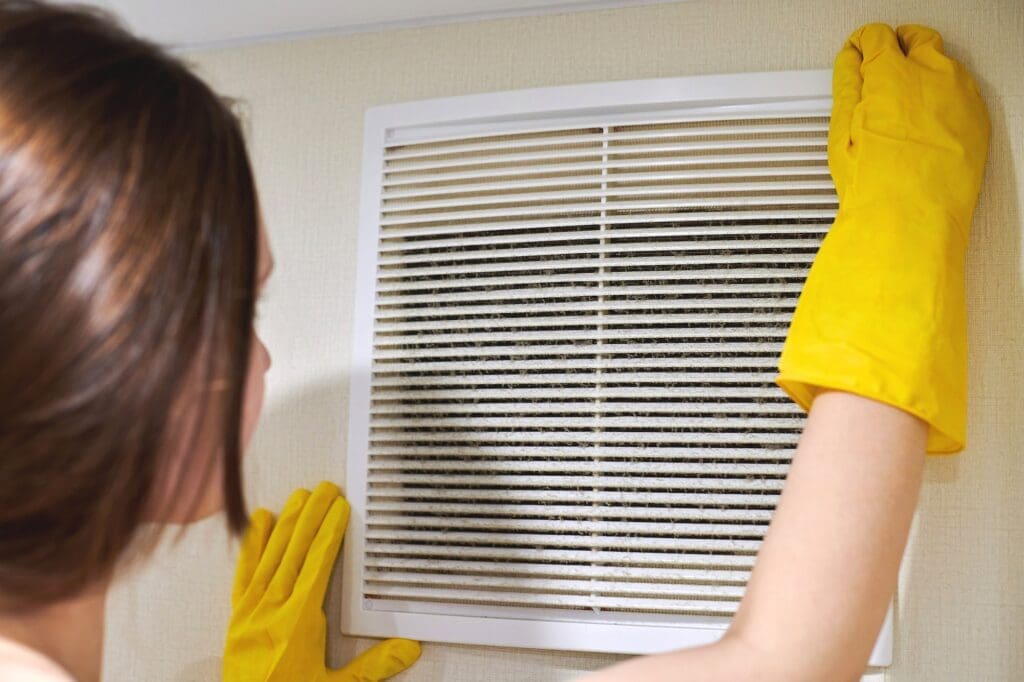Get Rid Of That Damp Smell: How To Tackle Odor After Water Damage
There’s nothing quite as disheartening as walking into your home or business and being greeted by that unmistakable damp smell. You know the one – it tells you there’s been some water damage, even if you can’t see any visible signs of a problem.
As a restoration technician with years of experience under my belt, I’ve had more than my fair share of encounters with this pesky odor. And trust me, nobody wants to live or work in a space that smells like a musty basement!
But fear not! With the right tools and techniques at your disposal, you too can conquer that damp smell and restore fresh air to your environment. In this article, we’ll delve into proven methods for tackling odors caused by water damage, leaving your space smelling clean and inviting once again.
By following these steps, not only will you be able to breathe easy knowing that unpleasant aroma is gone but also feel good about yourself for helping others achieve the same results. So let’s dive in and explore how to banish those stubborn smells for good!
Identifying The Source Of The Odor
Have you ever walked into a room and been hit with that unmistakable damp smell? You know, the one that seems to linger in the air, refusing to leave no matter how much you clean or ventilate?
As a restoration technician who has seen it all when it comes to water damage, I’m here to tell you there’s hope. Identifying the source of the odor is crucial for taking effective preventive measures and embarking on your journey towards odor elimination.
In my experience working with countless clients eager to serve others by providing pristine environments, I’ve learned that pinpointing where exactly the dampness originates can sometimes be challenging but ultimately rewarding.
Oftentimes, this process involves checking for leaks or moisture buildup in walls, ceilings, floors, and other hidden areas. Once you’ve identified the root cause behind that pesky smell, trust me; half of your battle is already won!
We’ll now move forward to discuss drying out the affected area as an essential step in saying goodbye forever to those unpleasant odors.
Drying Out The Affected Area
First of all, I’d recommend removing any standing water as quickly as possible. That’s the most important step in preventing odors. Next, you’ll want to dry out all of the materials that were affected by the water. That could include carpets, furniture, and other materials. Finally, you’ll want to use a dehumidifier to help speed up the drying process and reduce the chances of creating a damp smell.
Removing Standing Water
I know it’s devastating to see your home or business filled with water, but don’t worry – I’m here to help!
As a restoration technician, my first priority is removing any standing water from the affected area. This crucial step not only helps in evaluating damage more accurately but also plays a significant role in preventing mold growth down the line.
Trust me, there’s nothing more rewarding than knowing that we’re able to rescue someone’s precious belongings and restore their space back to normal.
So before diving into other cleanup tasks, let’s work together on getting rid of all that excess water – after all, every little bit counts when it comes to drying out your property effectively.
Drying Out Materials
Now that we’ve tackled the standing water, let’s move on to the next important step in drying out the affected area: eliminating moisture from materials.
I know it might seem overwhelming at first, but trust me, with a little teamwork and patience, we can bring your space back to life!
The key here is using fans strategically placed around the room to promote air circulation and speed up the evaporation process.
As a restoration technician, I’ve seen firsthand how effective this method can be in restoring not only structures but also precious belongings like furniture and personal items.
So let’s get those fans going and give moisture the boot – after all, helping people reclaim their space is what makes our job so rewarding!
Using Dehumidifiers
Now that we’ve got those fans working their magic, it’s time to introduce another vital tool in our moisture-fighting arsenal: dehumidifiers.
As a restoration technician, I can’t stress enough the importance of these handy devices when it comes to drying out your space and preventing mould growth.
By testing humidity levels regularly and adjusting the settings on your dehumidifier accordingly, you’ll be creating an environment where excess moisture doesn’t stand a chance!
Plus, using dehumidifiers will help protect your belongings and maintain the structural integrity of your home or business.
So let’s plug in those powerful machines and continue our mission of restoring spaces – after all, there’s nothing more satisfying than knowing we’re making a difference in people’s lives!
Using Dehumidifiers
Now that we’ve covered the basics of tackling odor after water damage, let’s dive into one of my favorite tools in our arsenal: dehumidifiers.
As a restoration technician, I can’t stress enough how crucial it is to maintain an ideal humidity level in your home or workspace when dealing with dampness and odors. Not only does testing humidity help us identify problem areas, but it also plays a vital role in combating mildew and promoting overall air quality.
Dehumidifiers are fantastic for removing excess moisture from the air and restoring balance to your space. By creating an environment where mold and mildew struggle to thrive, you’re taking a significant step towards eradicating those pesky smells while simultaneously helping others breathe easier – literally!
Remember, maintaining optimal humidity levels not only helps tackle unpleasant odors but also contributes to healthier living spaces for everyone involved. With the power of dehumidification on your side, you’ll be well-equipped to conquer any lingering scents left behind by water damage.
But don’t stop there; next up, we’ll explore another essential tool for purifying the air: utilizing air purifiers!
Utilizing Air Purifiers
Ah, the sweet scent of success! Wouldn’t it be wonderful if we could just snap our fingers and make that damp smell vanish after water damage? While I may not have magical powers, as a restoration technician, I can certainly share some effective odor removal methods with you.
In this section, we’ll dive into one such powerful tool: air purifiers. Now that you’re intrigued by how air purifiers can help in tackling odors after water damage, let me break down four key benefits for you:
- Efficiently remove contaminants: Air purifiers are designed to filter out airborne particles like mold spores and bacteria, which contribute significantly to unpleasant smells.
- Testing air quality: Some advanced air purifiers come with built-in sensors that monitor and display your indoor air quality levels – helping you keep track of improvement over time.
- Neutralize odors at their source: By trapping and eliminating odor-causing particles from the air, these devices work tirelessly to freshen up your space without simply masking the smell.
- Prevent future growth of mold and mildew: Continuous use of an air purifier creates a cleaner environment where mold and other allergens struggle to thrive.
So there you have it – armed with an efficient air purifier by your side, those pesky odors will soon become a thing of the past! But wait… we’re only getting started on this journey towards deodorizing bliss.
Next up, let’s explore another essential part of reclaiming your space: cleaning and sanitizing surfaces.
Cleaning And Sanitizing Surfaces
Now that you’ve got your air purifiers working their magic, it’s time to roll up your sleeves and tackle the task of deep cleaning and sanitizing surfaces. This is an essential step in eliminating odor after water damage because residual moisture can lead to mold growth and unpleasant smells. As a restoration technician, I know firsthand how important it is to properly clean and sanitize all affected areas.
Before we dive into the process, let me share with you a handy table outlining some common household items that may require specific attention when it comes to cleaning and sanitizing after water damage:
| Item | Cleaning Method |
|---|---|
| Upholstered furniture | Use upholstery cleaner or steam clean; apply sanitizing agents if necessary |
| Carpets | Steam clean or shampoo; use carpet sanitizer |
| Hardwood floors | Vacuum, mop with appropriate cleaner, and dry thoroughly |
| Walls | Wipe down with mild detergent solution; rinse with clear water; apply sanitizing agent as needed |
| Appliances | Clean exterior with suitable cleaner; for interior components (like fridge shelves), use sanitizing solutions |
It’s crucial not only to remove any lingering dirt but also to kill off harmful bacteria using effective sanitizing agents. Don’t forget about those hard-to-reach spots – they need thorough cleaning too! Keep in mind that certain materials like porous surfaces might require specialized treatment or even professional assistance.
As you continue restoring your home back to its pre-water-damage state, remember that containing the affected area plays a significant role in preventing further issues. So stay tuned for our next discussion on this topic!
Containing The Affected Area
On one hand, you’re eager to get rid of that damp smell and restore your space; on the other hand, it’s crucial to contain the affected area before diving into full-scale odor treatment.
As a restoration technician with years of experience under my belt, I can’t stress enough how important it is to prevent the spread of odors and contaminants throughout your home or workspace. You’ll want to begin by storing materials safely away from unaffected areas. This step not only protects your belongings but also allows for smoother progress when addressing water damage.
Now that we’ve got our priorities straight, let’s talk about creating a clear boundary between damaged and undamaged spaces. It might seem like an unnecessary precaution at first glance, but trust me – this is key in ensuring an efficient cleanup process while preventing further contamination. By isolating the impacted zone, you’ll be able to focus solely on treating the source without worrying about additional consequences elsewhere in your property.
And as someone who genuinely cares about helping others return their homes back to normalcy after such incidents, I assure you this approach will save time and effort in the long run.
Next up: sealing off vents and air ducts – stay tuned!
Sealing Off Vents And Air Ducts
Now that we’ve addressed the root cause of the damp smell, let’s move on to another crucial step – sealing off vents and air ducts.
We want to make sure odors don’t have a chance to infiltrate other areas of your home or building.
As someone who loves helping others maintain a healthy and fresh environment, I can assure you that taking this step will go a long way in preventing any lingering smells from spreading throughout your space.
To start with, inspect all vents and air ducts for damage or gaps where moisture could be seeping in.
When it comes to replacing seals, consider using high-quality materials designed specifically for humidity resistance.
This is especially important if you’re in an area prone to heavy rainfall or flooding.
By doing so, you’ll not only be keeping unpleasant odors at bay but also ensuring your loved ones or clients are breathing clean air free from contaminants.
So remember: preventing infiltration starts with giving those vents and ducts some much-needed attention!
With that taken care of, let’s delve into our next vital task – dealing with damaged materials themselves.
Replacing Damaged Materials
Replacing carpet after water damage can be tricky. It’s important to address the issue quickly in order to prevent any further damage or the growth of mold.
Drywall is often one of the most damaged materials in the event of water damage. Replacing it is essential to ensuring that the structure of your home is stable and to getting rid of any unwanted odors.
Replacing Carpet
I’ve got to tell you, one of the best ways to completely get rid of that damp smell after water damage is by replacing your carpet.
As a restoration technician, I know firsthand how important it is to not only remove damaged materials but also replace them with fresh ones.
When it comes to replacing your carpet, consider installing padding for added comfort and choosing a color that will brighten up your space – trust me, this makes all the difference!
After all, there’s nothing more satisfying than helping others create a clean and comfortable environment in their home where they can feel at ease once again.
So go ahead and make that change – you’ll be glad you did!
Replacing Drywall
Now that we’ve talked about replacing your carpet, let’s not forget another crucial aspect of restoring a space after water damage – replacing drywall.
As an experienced restoration technician, I can’t stress enough the importance of properly removing and installing new drywall to ensure a safe and healthy living environment.
When you’re tackling this project, don’t skip on installing insulation as it provides added energy efficiency and helps with mold prevention.
Trust me; there’s nothing more rewarding than knowing you’ve contributed to creating a comfortable home for someone else by taking care of every little detail.
So go ahead, roll up your sleeves, and show that damaged drywall who’s boss!
Applying Odor Absorbing Solutions
Did you know that about 98% of basements will experience some form of water damage in their lifetime? As a seasoned restoration technician, I can assure you that tackling the odor after water damage is an essential step to restoring your home’s comfort and safety.
In this section, we’ll discuss how to apply odor-absorbing solutions like using sprays specifically designed for removing mold and other unpleasant smells. Using sprays is one of the most effective ways to neutralize odors caused by water damage. They are specially formulated to target the source of the smell – usually mold or mildew growth.
Start by thoroughly cleaning the affected area with soap and water; then, generously spray the solution onto surfaces where you suspect mold might be hiding. Allow it to work its magic for a few hours before wiping clean any residue left behind. Remember always to test on a small inconspicuous area first and follow product instructions carefully! By doing so, you’re not only eliminating foul odors but also helping others who may come into contact with these spaces feel comfortable again.
Next up, let’s explore another fantastic way to banish damp smells – using charcoal and baking soda!
Using Charcoal And Baking Soda
Now that you’ve tried odor absorbing solutions, let’s explore another highly effective method to banish those lingering damp smells – using charcoal and baking soda.
Both of these natural substances are renowned for their ability to absorb odors, making them an excellent choice for tackling the aftermath of water damage. Trust me, as a restoration technician, I’ve seen it work wonders in numerous situations!
To start with, consider placing small containers or bags filled with activated charcoal around the affected area. Activated charcoal is known for its powerful absorption properties — it can help neutralize even the most persistent musty smells caused by water damage.
You could also try salt scrubbing surfaces like walls and floors if they’re still emitting unpleasant odors after being cleaned and dried. In addition to this, generously sprinkle some baking soda on carpets, upholstery, or other porous materials before vacuuming it up a few hours later (or better yet — leave it overnight!).
This simple technique will not only eliminate any remaining damp scents but also leave your home smelling fresh and clean once again. Go ahead and give these methods a shot; you’ll be amazed at how well they complement each other in restoring your living space back to normal!
Frequently Asked Questions
How Long Does It Usually Take For A Damp Smell To Go Away After Addressing Water Damage?
Let me tell you, when it comes to damp smells after water damage, there’s no one-size-fits-all answer.
The amount of time it takes for the odor to disappear really depends on a number of factors, such as the severity of the damage and how quickly we address those pesky odor sources.
As a restoration technician with years of experience under my belt, I’ve seen situations where mold prevention efforts have made all the difference in eliminating that musty smell sooner rather than later.
But let’s not beat around the bush – sometimes it can take days or even weeks for things to fully dry out and return to normal.
The important thing is keeping our eyes on the prize: helping others by restoring their homes and lives back to tip-top shape after unexpected disasters.
And trust me, once you tackle those odors head-on and get everything properly cleaned up, your nose will thank you!
Are There Any Health Risks Associated With Living In A Home With A Persistent Damp Smell After Water Damage?
Living in a home with a persistent damp smell after water damage can definitely pose some health risks, especially if mold growth is present.
As a restoration technician, I’ve seen how poor air quality caused by lingering dampness and mold can lead to allergies, respiratory issues, and other health problems for those living in the affected space.
It’s important not only for your own well-being but also for the well-being of others around you that you address these issues promptly and efficiently.
After all, we’re in this together – let’s make sure everyone has a healthy place to call home!
Can A Professional Cleaning Service Effectively Remove Damp Odors After Water Damage, And How Much Does This Typically Cost?
Yes, a professional cleaning service can definitely help you effectively remove damp odors after water damage!
As a restoration technician or water damage expert, we utilize advanced techniques such as moisture proofing and air purifying to ensure that your home is free from any lingering smells.
Depending on the extent of the damage and the size of your property, costs may vary – but it’s always worth investing in our services to restore a healthy living environment for both you and those around you.
After all, there’s no better feeling than knowing you’re providing a clean, odor-free space for everyone to enjoy.
Are There Any Specific Types Of Household Materials Or Fabrics That Are More Prone To Retaining Damp Odors After Water Damage?
Oh, the joy of discovering which household materials and fabrics are more prone to retaining that lovely damp odor after water damage! As your friendly neighborhood restoration technician, I’m here to tell you that porous materials like carpets, upholstery, drywall, and even certain types of insulation are truly gifted at holding onto those pesky odors.
Mold removal can help in some cases, but it’s often not enough – odor prevention is key. You see, these particular materials just love soaking up moisture (bless their hearts), creating a welcoming environment for mold and mildew growth.
So next time you find yourself facing water damage and its accompanying stench in your home, remember: those ever-so-absorbent materials might be putting up a fight against your efforts to banish dampness from their midst. But have no fear; with persistence and the right approach, we can conquer this smelly situation together!
How Can I Prevent Future Water Damage And Damp Smells In My Home Or Property?
To prevent future water damage and damp smells in your home or property, it’s important to focus on two key strategies: waterproofing and moisture proofing.
As a restoration technician, I’ve seen firsthand how crucial these measures are for maintaining a healthy living environment.
Waterproofing involves creating barriers that keep water from entering your space through vulnerable areas such as walls, floors, and foundation.
Moisture-proofing is all about controlling the humidity levels indoors by using proper ventilation systems and dehumidifiers.
By combining both of these methods, you’ll not only protect your belongings but also contribute to the well-being of others who may be affected by mold growth, mildew, or other health hazards caused by excessive moisture.
Don’t wait until it’s too late – take action now to safeguard your home and community!
Conclusion
In conclusion, dealing with damp smells after water damage can be quite a hassle. The time it takes for the odor to dissipate depends on various factors such as effective cleaning and adequate ventilation. However, one cannot afford to ignore these unpleasant odors, as they may pose health risks in the long run. It’s essential to address the issue promptly and ensure that your living space is both clean and safe.
If you’re struggling to eliminate lingering damp odors, why not consider hiring a professional cleaning service? Their expertise will save you time and effort while guaranteeing satisfactory results. Although this option might come at a cost, isn’t it worth investing in your health and peace of mind?
Lastly, being proactive about preventing future water damage is crucial in avoiding those dreaded damp smells altogether. By routinely inspecting areas prone to leaks or moisture accumulation and using materials less likely to retain odors, you’ll safeguard your home from potential harm.
Remember – prevention is always better than cure! So take charge today and keep those pesky damp smells at bay!



